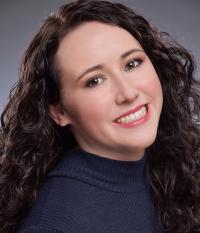
In 2010, just before entering the fifth grade, Katherine was diagnosed with epilepsy. She had gone from feeling seemingly fine to experiencing epileptic seizures virtually overnight. Concerned, her family sought medical attention and Katherine was prescribed the maximum dose of several anti-seizure medications to control her symptoms. Unfortunately, the medications didn’t work. She continued experiencing frequent seizures, which ultimately prevented her from various day-to-day tasks and activities, like showering independently or swimming.
For Katherine’s parents, phone calls from teachers, the school nurse and the physical education teacher informing them that she had yet another seizure became a frequent occurrence. During Katherine’s basketball games, her dad, Dorsey, would closely monitor Katherine on the court. He could always recognize the onset of a seizure by her hand motions and would quickly run courtside to stop the game so he could tend to her.
A spark of hope
This was their family’s day-to-day life. Then one day during lunch with a friend, Katherine’s mom, Joyce, heard about a new, innovative procedure to treat epilepsy. This ignited hope in Joyce, who worked in the real estate industry.
At the same time, Dr. Angus Wilfong, now division chief of Neurology and associate director of the Barrow Neurological Institute at Phoenix Children’s, was in the process of relocating from Texas to begin working at Phoenix Children’s. In a purely kismet moment, Joyce and Dr. Wilfong’s paths crossed. In conversation, he learned of Katherine’s condition and told Joyce about the medical procedure that he had developed to address epilepsy — laser ablation surgery. It was the same procedure that Joyce’s friend had previously mentioned. Best yet, Dr. Wilfong was making the procedure available at Phoenix Children’s. “The timing was perfect! It was just a miracle,” said Joyce.
“Despite being placed on maximum doses of several anti-seizure medicines, Katherine continued experiencing frequent seizures. Since she had drug-resistant epilepsy, laser ablation became a viable treatment option for her,” said Dr. Wilfong.
Katherine’s parents were thrilled when they learned that Katherine was eligible for surgery. She would be the second pediatric patient to receive laser ablation at Phoenix Children’s.
However, the thought of having brain surgery was scary for Katherine. She recalls thinking, “They are going to cut into my head … Am I going to be awake during the procedure? But then, my medical team walked me through it and I thought, it sounds like any other surgery.”
It was July 2017, seven years after her initial diagnosis, that Katherine underwent laser ablation surgery at Phoenix Children’s. She only spent one night in recovery and observation at the hospital and was able to go home with a single dissolvable stich in her scalp. Her pediatric team predicted there was a 75 – 80% chance that Katherine would be 100% cured of the epilepsy. “The goal of laser ablation is to stop seizures,” said Dr. Wilfong. And that’s exactly what it did for Katherine.
Laser ablation illuminated
The latest advancement in the treatment of pediatric epilepsy, laser ablation is minimally invasive surgery that uses targeted light to heat and destroy unwanted cells through a single, tiny incision. Using MRI (magnetic resonance imaging) and high-resolution monitors, surgeons place a thin laser probe with pinpoint accuracy into the brain and perform the surgery. The procedure is less painful and risky than traditional surgery and can bring an end to a child’s seizures — literally overnight.
“With my epilepsy, I felt like I was carrying a heavy weight,” Katherine said. “When my epilepsy was gone, I felt like the weight had been lifted.”
After undergoing surgery, Katherine was a little skeptical. “I thought my epilepsy may come back,” recalled Katherine. But she remained determined to let nothing hold her back from living life to the fullest.
Katherine’s older brother, Kevin, was there every step of the way through her treatment and recovery. A huge supporter of his sister, he always went above and beyond to look out for her. To encourage her after surgery, Kevin gathered dozens of well-wishing videos from her friends and family and put together a beautiful compilation video that she could watch as she recovered. His dedication and positive energy served as an inspiration to both Katherine and their parents.
After a smooth recovery, Katherine returned to school 10 days following her procedure. “Everyone at school knew about my surgery and was surprised that I could come back to school so quickly. In my mind, there was a chance that my seizures could come back. But I didn’t want to fall behind in my classes, so I went.” With each passing day, Katherine felt better and better, and her confidence grew — her seizures weren’t making a comeback.
Through this experience, Katherine learned that a lot of the kids in her school had misconceptions about epilepsy. “Many children were afraid that epilepsy was contagious,” said Katherine. She and her family took this opportunity to educate others that it was not contagious.

A bright future ahead
Fast forward to 2022, Katherine has remained seizure-free. She has since learned how to drive, can be at home alone, is permitted to swim and is loving college life. She also loves performing and singing. In short, she is absolutely thriving. With the ability to live independently, she has a strong drive to achieve her dreams.
When asked what she would say to another child with epilepsy who is eligible for laser ablation surgery, Katherine said, “I would definitely tell them to go for it. It really helped me.”
For more information about Phoenix Children’s Epilepsy Program, click here.
